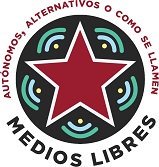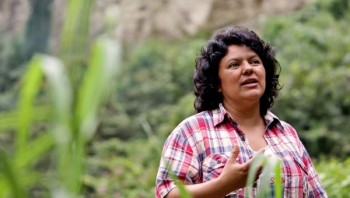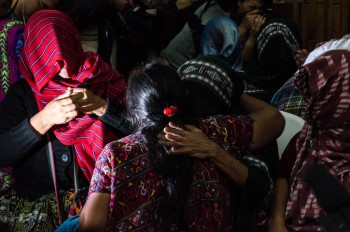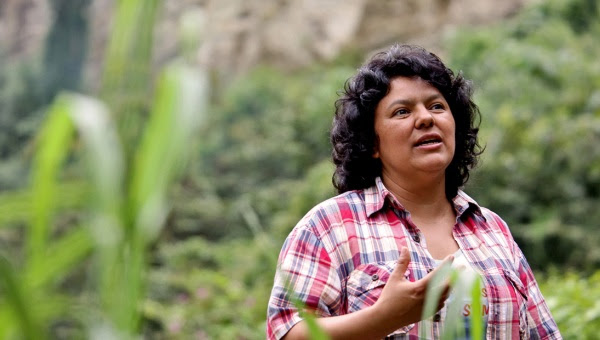
Topics
(Español) Se enciende el fuego de la autodefensa feminista en el estado de México
Texto: Dirce Navarrete
Fotos: Miguel García Q. y Manuel Amador
En el marco de la conmemoración combativa del día internacional de las mujeres, este 5 de marzo del 2016, diversas organizaciones realizaron una jornada de actividades para seguir denunciando la violencia feminicida que se vive en la entidad más peligrosa para ser mujer en nuestro país: el Estado de México.
Estamos generando este movimiento dentro de la periferia urbana. Salimos a gritar, a marchar y prestar nuestro rostro indignado a las mujeres que la violencia machista les ha desdibujado, a las que su cuerpo les han mutilado, a quienes han embolsado y arrojado al bordo, a quienes las han baleado a plena luz del día y que se les ha aniquilado, ahí junto a un Estado omiso y una sociedad indolente en su silencio. Por eso salimos hoy a las calles para recuperar nuestra dignidad.
A la una de la tarde, el metro Ciudad Azteca fue el punto de reunión de muchas mujeres que con ruidos de silbatos, consignas y canciones feministas —y a pesar del inmediato cerco policial— emprendieron la acción ¡Silba, grita y organiza! en Ecatepec, municipio en el que, según el Observatorio Ciudadano Nacional del Feminicidio, entre 2012 y 2015 se han registrado 183 feminicidios y 400 mujeres han sido desaparecidas; lo cual representa el 25% a nivel estatal.
La actividad se realizó desde la estación Ciudad Azteca hasta Pantitlán, abordando las líneas B y 5 del metro. Ante la mirada desconcertante de mujeres y hombres que transitaban por éstas, las colectivas feministas compartieron silbatos para la autodefensa, datos, información y cantos con un mensaje contundente:
No vamos a esperar una vez más a que vengan a «salvarnos» aquellas instituciones que son las mismas que reproducen y legitiman la violencia machista, ¡lo vamos a hacer nosotras! Llamamos a la organización y a la autodefensa. Apostamos e invitamos al «si te defiendes nos defiendes a todas», asumiendo que esto sólo será eficaz cuando luchemos por la vida a nivel colectivo. Nuestra principal estrategia es encontrarnos, aprender a reconocer en las otras posibles aliadas. Si la violencia es sistemática, nuestra organización también debe serlo.

(Español) Pronunciamiento en repudio del asesinato de Berta Cáceres y demanda de protección para Gustavo Castro
Al Gobierno Nacional de Honduras
Secretaria de Relaciones Exteriores de Honduras
Secretaría de Derechos Humanos, Justicia, Gobernación y Descentralización de
Honduras
A la Embajada y Cónsul de México en Honduras
A la Secretaría de Relaciones Exteriores de México
Comisión Nacional de Derechos Humanos de México
Al Consejo Cívico de Organizaciones Populares e Indígenas de Honduras (COPINH)
Al pueblo lenca
A la sociedad civil y organizaciones de derechos humanos a nivel internacional
8 de marzo de 2016
Chiapas, México
PRONUNCIAMIENTO DE REPUDIO POR EL ASESINATO DE BERTA
CÁCERES EN HONDURAS Y DEMANDA POR LA PROTECCIÓN E
INTEGRIDAD DE LA VIDA DE GUSTAVO CASTRO
Por medio de este documento, manifestamos nuestra indignación y repudio por el asesinato
de la compañera Berta Cáceres, líder de la comunidad lenca y coordinadora del Consejo
Cívico de Organizaciones Populares e Indígenas de Honduras (COPINH), la madrugada del
pasado jueves 3 de marzo del año en curso, en la comunidad la Esperanza, Honduras.
Este acto atroz, ha ocurrido en un contexto de amenazas e intimidación por su honorable y
digno trabajo como defensora los derechos de los pueblos indígenas originarios en nuestra
región, implacable defensora de los derechos de la mujer y de las luchas por la defensa de
la tierra, los ríos y los territorios libres, frente a los letales megaproyectos extractivos y de
despojo. Cabe destacar que este hecho ocurrió en un contexto de creciente hostigamiento y
asesinatos a otros líderes del COPIHN y de otras comunidades en resistencia contra la
represa de Agua Zarca, prevista en el noroeste de Honduras, en el Río Gualcarque,
concesionada a la empresa Desarrollos Energéticos S.A., (DESA).
En los mismos hechos, se puso en riesgo la vida de nuestro colega, el activista mexicano
Gustavo Castro, miembro de la organización chiapaneca Otros Mundos Chiapas, de la Red
Mexicana de Afectados por la Minería (REMA) y del Movimiento Mesoamericano contra
el Modelo Extractivo Minero (M4), quién fue herido en este mismo escenario de homicidio.
De acuerdo con los más recientes comunicados de Otros Mundos AC/Chiapas – Amigos de
la Tierra México (6/03/2016 y 7/03/2016), Gustavo Castro permanece retenido en
Honduras, al haber sido interceptado por autoridades de dicho país el pasado domingo 6 de
marzo. La Fiscalía General de Honduras decidió que tenía que ampliar su declaración en
La Esperanza (el mismo lugar en que se cometió el homicidio de Berta C.) y el 7 de marzo
prolongó por 30 días la alerta migratoria que le impide regresar a México. Lo cual
representa un alto riesgo para su integridad física y psicológica y representa una decisión
injustificada, ya que Castro ha aportado toda la información suficiente a la Fiscalía para el
esclarecimiento de los hechos.
Esta situación somete a un grave riesgo la vida de nuestro compañero, por lo cual exigimos
a las autoridades del gobierno hondureño garantizar su seguridad y que las investigaciones
sean dirigidas hacia la empresa Desarrollos Energéticos S.A. (DESA), promotora de la
presa Agua Zarca contra la cual el COPINH y Berta Cáceres han dirigido su lucha y
resistencia por la defensa y el territorio.
Demandamos a la embajada y consulado mexicano en Honduras agilizar su retorno
inmediato a México. También demandamos a la Secretaría de Relaciones Exteriores de
México que, bajo los protocolos de protección a los/as ciudadanos/as mexicanos en el
extranjero, intervenga con decisión en el caso, con el fin de garantizar la protección de
Castro en el país centroamericano y su retorno inmediato a nuestro país.
Los y las firmantes de este documento –instituciones, activistas, académico/as,
organizaciones sociales y medios de comunicación crítica-, externamos nuestra solidaridad
con los familiares, compañeros y amigos de Berta Cáceres y exigimos una pronta solución
sobre el caso de Gustavo Castro.
Nos adherimos a los pronunciamientos hechos previamente por la organización M4, Otros
Mundos AC/Chiapas – Amigos de la Tierra México, REMA, las organizaciones sociales y
de masas de la Revolución Cubana, el Consejo Latinoamericano de Ciencias Sociales
(CLACSO), entre otras, haciendo eco de las palabras que los compañeros y compañeras
cubanas externaron solidariamente el pasado jueves 3 de marzo:
“Hoy los ríos de Honduras, esos que conectan con los llanos y montañas, con la sangre
derramada por sus más nobles hijos, con las venas abiertas de América Latina, lloran.
Lloran por la ausencia de una de sus más firmes y consecuentes guardianas”.
Firmas por organizaciones
Observatorio de las democracias: Sur de México y Centroamérica (ODEMCA/Cesmeca-
Unicach)
Centro de Derechos de La Mujer de Chiapas
Proyecto Videoastas Indígenas de la Frontera Sur (PVIFS)
ProMedios de comunicación comunitaria, Chiapas
Colectivo Maan Voima-Finlandia
Nodo Chiapas de la Red Transnacional Otros Saberes (RETOS)
Nodo Países Bajos de. RETOS
Nodo Ixhuatán de RETOS
Nodo Perú de RETOS
Nodo Brasil de RETOS
Nodo Colombia de RETOS
Firmas personales
Xochitl Leyva Solano | Ciesas Sureste
Mauricio Arellano Nucamendi | CESMECA, México
Mercedes Olivera | CESMECA, México
Pablo Uc | CESMECA, México
Daniel Villafuerte | CESMECA, México
Héctor Javier Sánchez | Periodista, RompeViento
Amaranta Cornejo Hernández | CESMECA, México
Sara Lua González Foster / Jalapa
Krina López Acosta / Jalapa
Karime León Sánchez / Jalapa
Guillermo Arrioja Carrera / Jalapa
Brandon Báez Camarena / Jalapa
Perla María Villa Jiménez / Jalapa
Rosa María Cuéllar Gutiérrez / Jalapa
Saulo Sinforoso Martínez / Jalapa
Sein Laparra Méndez / Jalapa
Mayeli Ochoa Martínez / Jalapa
Maricarmen Lara Orozco / Jalapa
Alejandra Jiménez Ramírez / Jalapa
Geraldine Lamadrid Guerrero / Jalapa
Maibe Kreisel / Jalapa
Brenda Salguero Echavarría / Jalapa
Erwin Alejandro / Jalapa



 Por Santiago Navarro F., Heriberto Paredes y Aldo Santiago
Por Santiago Navarro F., Heriberto Paredes y Aldo Santiago




